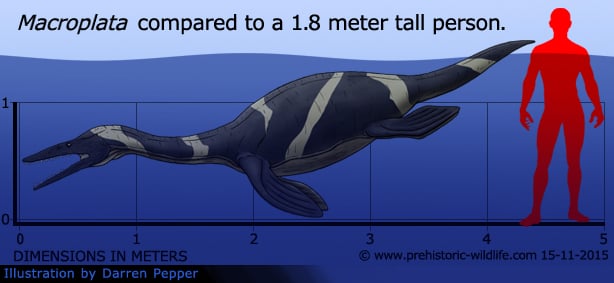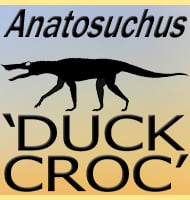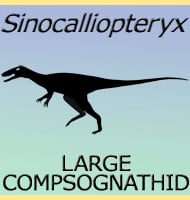In Depth
Macroplata is classed as a rhomaleosaurid pliosaur, a group notable for having proportionately longer necks and smaller skulls than the more well-known short necked large skulled pliosaurs such as Liopleurodon, Simolestes and of course Pliosaurus itself. A better analogy is that Macroplata looks like a cross between the longer necked plesiosaurs of the Jurassic and the earlier nothosaurs of the Triassic which are thought to be the ancestors of both the plesiosaurs and pliosaurs.
Macroplata is notable for probably being a very powerful swimmer, something which is indicated by the large shoulder bones that could have supported more powerful muscles for the front limbs. These features combined with the numerous needle-like teeth of the mouth paint a picture of Macroplata being a fast swimming predator of fish. However while the neck was longer than some other pliosaurs it was not as long as the plesiosaurs, particularly the much later elasmosaurids which suggests that Macroplata probably had a different hunting technique. The actual hunting behaviour of Macroplata may have been more along the lines of swimming around a shoal of fish and catching fish which couldn’t stay in sync with the shoals movements, or using its speed to charge into a shoal and snapping at fish before they could swim out of the way.
There was once a second species of Macroplata based upon fossil remains originally described as Plesiosaurus longirostris. This was identified as having a particularly long snout, and in 2011 this species was actually re-assigned to the genus Hauffiosaurus.
Further Reading
– The anatomy and taxonomy of Macroplata tenuiceps (Sauropterygia, Plesiosauria) from the Hettangian (Lower Jurassic) of Warwickshire, United Kingdom. – Journal of Vertebrate Paleontology 30(4):1069-1081. – H. F. Ketchum & A. S. Smith – 2010. – New information on Hauffiosaurus (Reptilia, Plesiosauria) based on a new species from the Alum Shale Member (Lower Toarcian: Lower Jurassic) of Yorkshire, UK. – Palaeontology 54(3):547-571. – R. B. J. Benson, H. F. Ketchum, L. F. Noe & M. Gomez-Perez – 2011.










